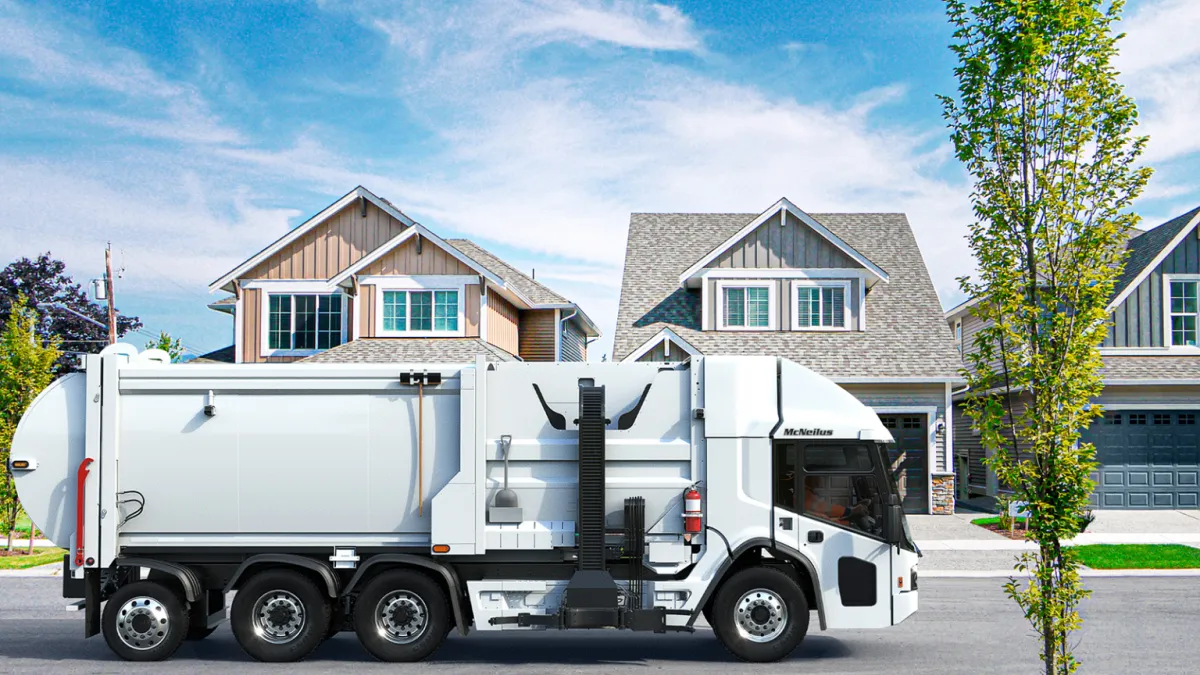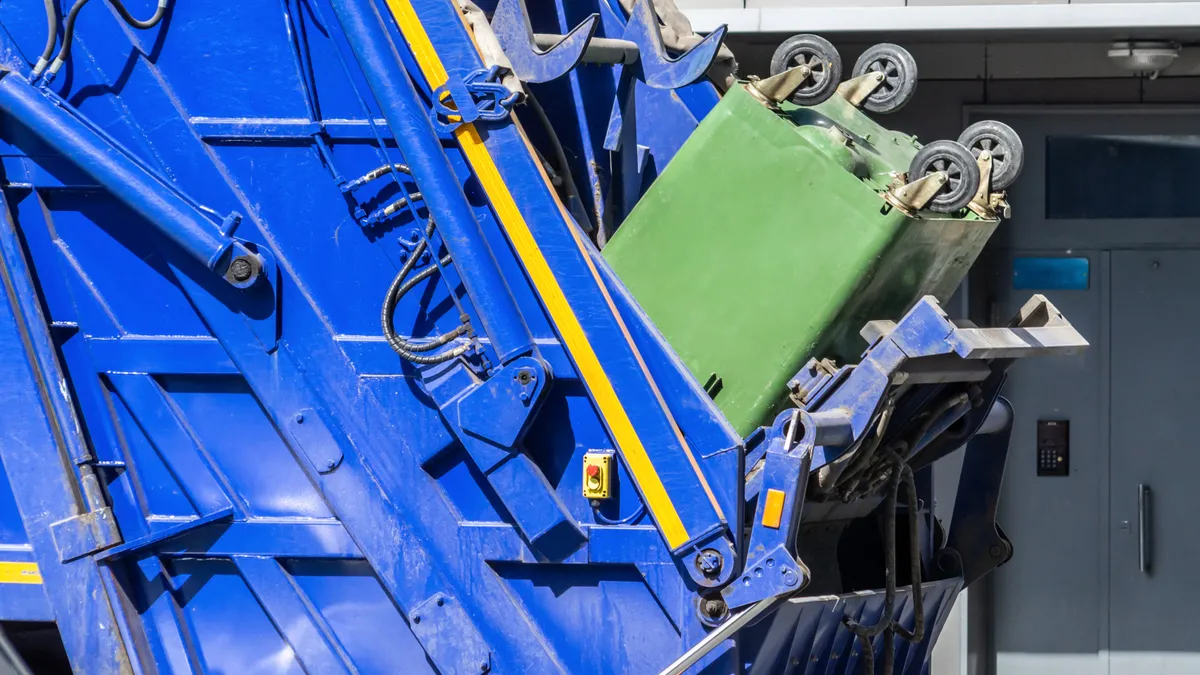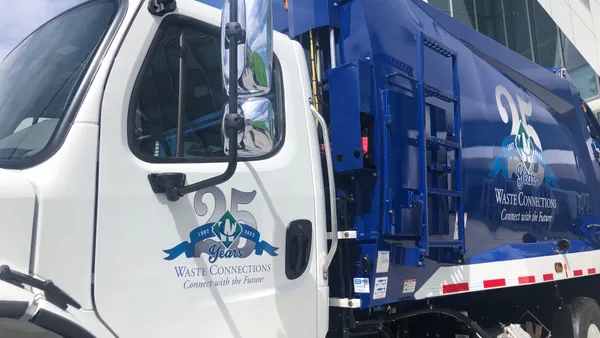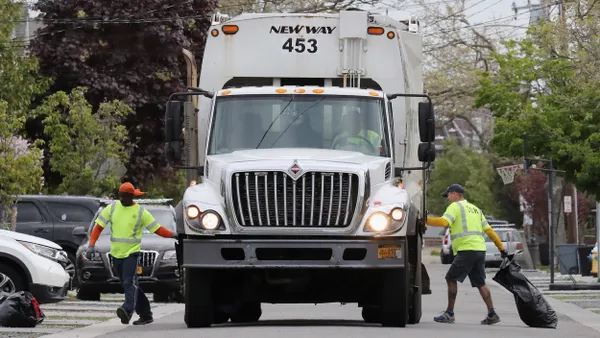Dive Brief:
- Together for Safer Roads, a non-governmental organization that supports fleet trucking safety, has formed the Direct Vision Leadership Council. The group aims to share information about the benefits of direct vision vehicles and support related safety research and development.
- Direct vision trucks have cab design features — such as increased window sizes, lower cab heights or reduced hood sizes — to increase visibility from the driver’s seat and remove blind spots. The council believes better adoption of such designs, alongside additional vehicle safety methods, will reduce crashes.
- The leadership council is made up of stakeholders such as vehicle OEMs McNeilus and Dennis Eagle, as well as city officials, large and small fleet operators and insurance providers. It also includes several waste industry groups, including the National Waste & Recycling Association and Interstate Waste Services, .
Dive Insight:
According to the Bureau of Labor Statistics, transportation-related incidents were the most common cause of fatalities for jobs across all industries in 2023, accounting for 36.8% of reported fatalities that year. The waste industry is particularly concerned with injuries and fatalities involving vehicles, as it is consistently listed as the most common type of fatality event for solid waste collection workers.
Together for Safer Roads promotes direct vision vehicle design as a key way to reduce roadway fatalities and injuries for a range of industries, particularly in urban areas. TSR says the design could lower incidents such as pedestrian collisions by about 23% compared with “conventionally designed” trucks. It recently published a direct vision fleet transition guide to help operators integrate the vehicles into fleets.
The new leadership council aims to promote updated vehicle designs through support for local and national policies. It also strives to incorporate data collection and research supporting the effectiveness of such vehicles, and offer industry perspectives on procurement, design and operations.
The council “provides an essential forum for key stakeholders — drivers, manufacturers, fleet managers and operators, and insurance and safety experts — to share information about the potential and practicalities of direct vision vehicles,” said said Peter Goldwasser, TSR’s Executive Director, in a statement.
Some waste haulers have begun integrating new fleet vehicles with direct vision designs in recent years. IWS uses these trucks in New York City and elsewhere in the region because they “help make our operations safer — for our drivers and for the communities we serve,” said Sal Mastriani, vice president of risk management, in a statement. The company plans to share what it has learned from the integration process as part of the council, he said.
Other waste companies, such as Republic Services, are integrating new vehicles into their fleets that have additional safety features including 360-degree external cameras, lane-departure sensors and a direct vision cab design. TSR highlighted these McNeilus-designed vehicles in its transition guide, along with examples from other vehicle companies such as Dennis Eagle.
Representatives from McNeilus and Dennis Eagle will co-chair the leadership council.
NWRA will also represent the waste industry on the council. The association supports safe vehicle design as one element to improve waste vehicle safety, said Kirk Sander, NWRA senior vice president and chief of safety and standards. NWRA has several fleet safety programs and resources, including one for smaller haulers.
The association recognizes “the critical role our drivers and helpers play as both operators of heavy trucks and vulnerable road users when they exit their vehicles to collect waste and recycling containers,” Sander said in a statement.
Some hurdles to wider adoption of these vehicles include lack of awareness about direct vision designs, as well as the perception from other industries that these kinds of vehicles are only applicable in the waste and recycling sectors, TSR said. Meanwhile, some local governments are beholden to procurement policies that limit what types of vehicles they can buy, the group added.
Policies that promote direct vision vehicle design already exist in places like New York City, which in 2024 began requiring all new city truck purchases to include either 360-degree camera technologies or direct vision cab design.
“As the nation’s largest municipal fleet in one of the most densely populated urban areas, we know that driver visibility in trucks is crucial to safety,” said Keith Kerman, chief fleet officer and deputy commissioner of the city’s Department of Citywide Administrative Services, in a statement.
London has required certain trucks to meet a direct vision standard since 2019, TSR noted in a news release. London has since recorded a 49% reduction in the number of fatal collisions involving large trucks and a 64% reduction “in crashes causing severe injuries where vision was a factor,” TSR said.
Other members of the council include the National Safety Council, AB InBev, UPS, the Insurance Institute for Highway Safety and the FIA Foundation. Officials with the cities of Boston, London and New York are also part of the council.














